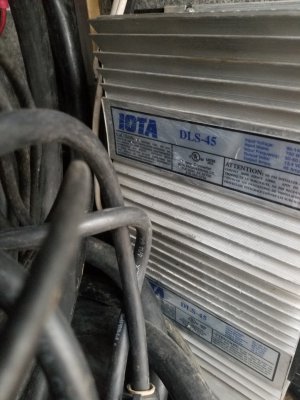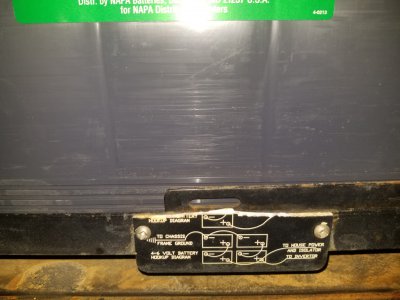DHudson
RVF Supporter
- Joined
- Dec 11, 2020
- Messages
- 391
- Location
- Texas
- RV Year
- 2000
- RV Make
- Newmar
- RV Model
- Dutch Star 3858
- RV Length
- 38 ft
- TOW/TOAD
- None
- Fulltimer
- No
Let me start by saying I am a ASE Master Tech and a GM Master Tech.
Just stating this so you will know that I know about vehicles and terms.
Inverters and Converters are new to me though.
So, I just bought this 2000 Dutch Star, Cat Engine, Freightliner Chassis.
The place I bought it from, had 2 marine batteries in it.. Everything hooked to those 2 batteries, hooked in parallel. That's all. I knew this when I bought it.
So I got 2 group 31 batteries for starting batteries and 4 2GC Golf cart batteries for the house.
I need to know for sure which wires go where between the starting batteries and the house batteries.
I hooked them up like I thought they should go and started checking voltage on both sets with engine off and running,
and generator off and running. I am do seeing any voltage difference between engines running or not,
With the generator running, the HW-RV 50 Surge Guard "over/under voltage" light was flashing.
I heard a pop and pretty sure it was a breaker.
I shut off the generator and disconnected power from the house batteries.
I shut off the engine, and tried to restart it. It started, but, ( and it may just be coincidence) the started stayed engaged . Has not done this until now.
Did not disengage when I cut the key off.
Disconnected power from the starting batteries..Touched the wires back to the terminals (starting batteries) and the starter did not re-engage.
I made sure every thing was disconnected and stopped
I believe wires are not hooked up right, but can find no information on what wire goes where.
There are 2 groups of wires that come into the battery box area, and I can not decide if each group should all be together or mixed between battery sets.
ANY HELP would be appreciated.
Thanks in advance
Danny
Just stating this so you will know that I know about vehicles and terms.
Inverters and Converters are new to me though.
So, I just bought this 2000 Dutch Star, Cat Engine, Freightliner Chassis.
The place I bought it from, had 2 marine batteries in it.. Everything hooked to those 2 batteries, hooked in parallel. That's all. I knew this when I bought it.
So I got 2 group 31 batteries for starting batteries and 4 2GC Golf cart batteries for the house.
I need to know for sure which wires go where between the starting batteries and the house batteries.
I hooked them up like I thought they should go and started checking voltage on both sets with engine off and running,
and generator off and running. I am do seeing any voltage difference between engines running or not,
With the generator running, the HW-RV 50 Surge Guard "over/under voltage" light was flashing.
I heard a pop and pretty sure it was a breaker.
I shut off the generator and disconnected power from the house batteries.
I shut off the engine, and tried to restart it. It started, but, ( and it may just be coincidence) the started stayed engaged . Has not done this until now.
Did not disengage when I cut the key off.
Disconnected power from the starting batteries..Touched the wires back to the terminals (starting batteries) and the starter did not re-engage.
I made sure every thing was disconnected and stopped
I believe wires are not hooked up right, but can find no information on what wire goes where.
There are 2 groups of wires that come into the battery box area, and I can not decide if each group should all be together or mixed between battery sets.
ANY HELP would be appreciated.
Thanks in advance
Danny














